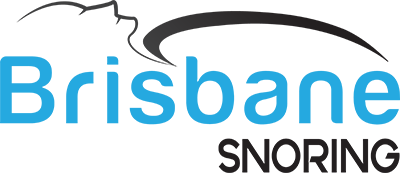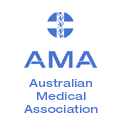Causes of Sleep Apnea
What causes sleep apnea? Brisbane Snoring are Brisbane’s experts on sleep apnea causes and sleep apnea treatments and have the answer to this question as well as how to get rid of sleep apnea. There IS a solution to sleep apnea that doesn’t involve surgery or sleeping in a mask! But before we discuss our revolutionary NightLase® laser sleep apnea treatment, it’s important to understand the symptoms and risks. This page will tell you everything you need to know about sleep apnea, including what can be done about it and advice on how to broach this potentially sensitive issue if you have a partner who snores. We know sleep apnea in children can be concerning for parents, so you’ll also find some useful information on sleep apnea in babies and children on this page.
If you just need information on snoring in general, please visit our what causes snoring page to get all the facts. If you already have all the information you need about sleep apnea and want to know how Brisbane Snoring can help you get a good night’s sleep, please visit our sleep apnea laser treatment page.
Key facts about sleep apnea
What is sleep apnea?
The term apnea (pronounced AP-ne-ah) literally means ‘without breath’. Sleep apnea is more a common condition that people realise. The condition is a result of shallow breaths while sleeping and in more severe cases actual breathing pauses.
Sleep studies have shown that these pauses in breathing can last a few seconds up to a few minutes, and they can occur 30 or more times in an hour. During this time the brain can become starved of oxygen and as a result, it shocks the body into restarting breathing patterns, often in the form of a loud snort or choking reflex.
Sleep apnea is an ongoing condition that disturbs your sleep resulting in your body being forced out of a deep sleep state and into a light sleeping pattern. This results in poor quality sleep, leaving you tired during the day. Sleep apnea is one of the leading causes of excessive sleepiness during the day.
What is Obstructive sleep apnea?
Obstructive sleep apnea (often referred to as OSA) is the most diagnosed and common of all sleep apnea conditions. The reported symptoms are either a partial reduction of the upper airways or in more severe cases can be a completed blockage. This obstruction of the airways results in periods of shallow breathing or even pauses during sleep, despite making the effort to breathe. OSA is often associated with reduced blood oxygen levels and is commonly accompanied by snoring.
The walls of the airways in the throat are made of soft tissue that can collapse, so it actually makes sense that our breathing occasionally becomes obstructed during sleep. While a small amount of OSA is considered normal, and many people experience short periods of OSA at some point in their life, a small percentage of individuals have chronic, severe OSA.
People with Obstructive sleep apnea are usually unaware of having difficulty breathing in their sleep. It’s often their partner or another person who has observed them sleeping who first identifies it as an issue, or a patient or their doctor may start to investigate it as a potential cause of tiredness during the day. It’s possible, though, for symptoms to go on for years without being diagnosed, during which time the individual may even become conditioned to the associated fatigue of significant sleep disturbance.
Obstructive sleep apnea is diagnosed by doctors as a syndrome using the technical name Obstructive sleep apnea–hypopnea syndrome, which refers to OSA that is associated with daytime symptoms. Short-term causes of OSA can include upper respiratory infections, tonsillitis or other illnesses that cause swelling of the throat. Temporary periods of OSA can also occur due to the use of alcohol and other drugs that cause the body tone to relax excessively.
What is Central sleep apnea?
Central sleep apnea is diagnosed as a disorder that occurs because as a result of your brain not sending proper signals to the muscles that control your breathing, which causes your breathing to stop and start during sleep. Central sleep apnea is not as commonly diagnosed as Obstructive sleep apnea.
It may occur as a result of other conditions, like stroke or heart failure, and sleeping at high altitudes can also cause Central sleep apnea. The treatment usually involves treating the existing condition, using a device that assists breathing or using supplemental oxygen.
What causes sleep apnea?
It’s natural for our airways to narrow when we sleep, but for someone with sleep apnea, their airways may become partially or fully blocked if:
- their throat muscles relax more than normal
- the natural shape of their head and neck creates a smaller airway
- their tongue and tonsils are large compared to the opening of their windpipe
- they are overweight (the extra soft fat tissue can make the windpipe narrower).
Who is at risk of developing sleep apnea?
Obstructive sleep apnea is a common condition, but it is more likely to occur in people who:
- have naturally smaller airways
- have smaller airways due to allergies or another condition that causes congestion
- have a family history of sleep apnea
- have high blood pressure
- are male
- are overweight.
Sleep apnea has also been linked to smoking, metabolic syndrome, diabetes and risk factors for stroke and heart failure.
In children, enlarged tonsils can be a factor as well as being overweight children also increases the risks.
What are the signs and symptoms of sleep apnea?
Not everyone who snores has Obstructive sleep apnea, but one of the symptoms of sleep apnea is chronic (ongoing) loud snoring. There may be pauses in the snoring, followed by choking or gasping sounds. You’re asleep when this happens so it’s likely you won’t even know its happening. Often a family member or partner will notice these things before you do.
The snoring is usually loudest when you’re lying on your back and less noisy when you’re on your side. You might not snore every night, but over time, it tends to get louder and happen more often.
Another major sign is tiredness during the day. You may find it especially hard to stay alert while you’re driving or during times when you’re less active. But even if you don’t have daytime drowsiness, it’s still important to consult a medical professional if you have problems breathing during sleep.
Other signs and symptoms of sleep apnea include:
- headaches in the morning
- trouble concentrating
- memory or learning problems
- feeling depressed or irritable
- mood swings or changes in personality
- waking up with a dry mouth or a sore throat
- waking up frequently to urinate
The most noticeable signs in children, aside from breathing difficulties while sleeping, are poor school performance, hyperactivity, tantrums and hostile behaviour. You may also notice children with sleep apnea breathing through their mouth instead of their nose during the day.
What are the risks if sleep apnea is left untreated?
Sleep apnea is caused by the airways becoming partially or fully blocked during sleep. This means less air gets to your lungs. If your blood oxygen levels drop low enough, it triggers your brain to interrupt your sleep, causing your windpipe to open.
Frequent drops in blood oxygen and reduced quality of sleep can cause stress hormones to be released. These hormones raise your heart rate and can increase your risk of conditions like high blood pressure and in more severe instances, heart attack, stroke, and heart arrhythmias.
This untreated sleep condition can also lead to changes in how your body uses energy, leading to an increased risk of obesity and diabetes. So don’t stick your head in the sand. Do the right thing by your body and your family by making an appointment with Brisbane Snoring today.
How is sleep apnea diagnosed?
At your appointment, Dr Colin Campey, Brisbane Snoring’s doctor, will ask you questions about how you sleep and how you function during the day. It is a good idea to keep a sleep diary for a week or two week period before your appointment. Record what you can about:
- your sleep patterns (time you begin to sleep, when you wake up, and any take naps that you might have)
- how rested you feel in the morning
- how tired you feel at various times in the day.
Dr Campey may also want to know how loudly and how often you snore or make gasping or choking sounds while you sleep. It’s highly likely you’ll be unaware of such symptoms and will need to ask a family member or bed partner to tell you. Let your doctor know if anyone in your family has been diagnosed with sleep apnea or has had symptoms of the disorder.
Dr Campey will also check your mouth, nose and throat structure, particularly looking for any signs of reduced airways including enlarged tissues. This diagnosis will assist in designing the best treatment options as will analysis of medical history.
Children who suffer from this sleep disorder can often present with enlarged tonsils which are identified during a physical exam and analysis of medical history, even with a limited history is also important.
How can I tell how bad my sleep apnea is?
The Snore Lab mobile app is a great way to get an indication of the severity of your sleep disorder.
What is the best treatment for sleep apnea?
NightLase laser treatment is available for central and obstructive sleep apnea. This is a non-invasive non-surgical method that uses a minimally pain-free laser to tighten up the tissue of your soft palate. Only mild discomfort is ever endured and the results are superb. NightLase treats the causes of the problem, not just the symptoms. For more information on NightLase treatment for sleep apnea, please visit our laser treatments for sleep apnea page.
How can Brisbane Snoring help cure my sleep apnea?
The first step is to talk to our doctor Colin Campey during a consultation. During this consultation, Dr Campey will make some recommendations for you, including discussing whether you are a suitable candidate for our NightLase laser therapy.
Other useful information about sleep apnea
How can family members help people with sleep apnea?
People with sleep disorders often don’t even know they have it. Family members or partners are usually the first to notice the signs. You can help by letting the person know what you’ve observed and providing emotional support. Encourage them to see a medical professional and help them follow their treatment plan.
How do I talk to my partner about their sleep apnea?
Some people are embarrassed to learn that they snore and may be resistant to the idea that their snoring could be a problem. Prepare yourself for this conversation first by learning about this sleep disorder, then approach the topic in a supportive, respectful manner. Tell them about the benefits they can look forward to from treatment, like feeling more alert and awake during the day, having fewer headaches and having better concentration. If your partner continues to insist that their snoring isn’t a problem, ask if you can show them why you’re concerned about recording their sleeping behaviour.
Are sleep apnea and snoring different?
Yes. Snoring is a symptom of sleep apnea, but if you snore, it doesn’t always mean that you also suffer from this sleep disorder. For in-depth information on snoring visit our What causes snoring page.
Are there home remedies to help stop sleep apnea?
In some cases, lifestyle changes are an effective way of managing OSA. Here are some habits you may like to consider changing:
- Lose excess weight. Even a small amount of weight loss can help.
- Even without weight loss, regular moderate activity, like a 30-minute walk, can help ease the symptoms of OSA.
- Avoid alcohol
- If safe to do so, avoid medications that make you sleepy, as these can relax the throat muscles.
- Talk to a medical professional about using a nasal spray to help keep your nasal passages open at night.
- Sleep on your side or stomach. The symptoms tend to be worse when you sleep on your back.
- If you smoke, get help to quit.
Apart from home remedies and laser treatments, what treatments are available for sleep apnea?
- A plastic mouthpiece (also known as an oral appliance). This may help some people with mild sleep apnea.
- Breathing devices such as a CPAP (Continuous Positive Airway Pressure) machine, which requires sleeping with a mask over your face as the device gently, blows air into your throat to keep your airways open.
- The type of surgery and how well it works depends on the cause of your sleep disorder.
Do I need a sleep study to tell if I have sleep apnea?
A sleep study is a test that measures how well you sleep and how your body responds to sleep disturbances. It can record things like the amount of oxygen in your blood, airflow through your nose and chest movements. Dr Campey may recommend a sleep study in order to make an accurate diagnosis.
Can babies and children have sleep apnea?
Yes. While it is less likely in children than in adults, it is still possible. Observe your child while they sleep and note any pauses in their breathing, then discuss your concerns with a medical professional like Dr Colin Campey at Brisbane Snoring.
Which babies are at risk?
The more premature a baby is, the more likely they are to have sleep apnea (usually referred to as apnea of prematurity). In addition, children with congenital conditions such as Down Syndrome are more likely to experience sleep apnea due to issues with their the upper airway structure.
What are the symptoms of sleep apnea for babies?
Babies with this sleep disorder may have prolonged pauses in their breathing of 20 seconds or longer while sleeping. Others may have shorter, repeated pauses or present with symptoms like a slow heartbeat, limp limbs or weak muscles and turn pale or blue.
Please bear in mind that babies younger than 6 months often have an irregular breathing pattern, starting with rapid breaths, then slower breaths, then a pause of 5-10 seconds, and then repeating the pattern again from the start. This is perfectly normal.



